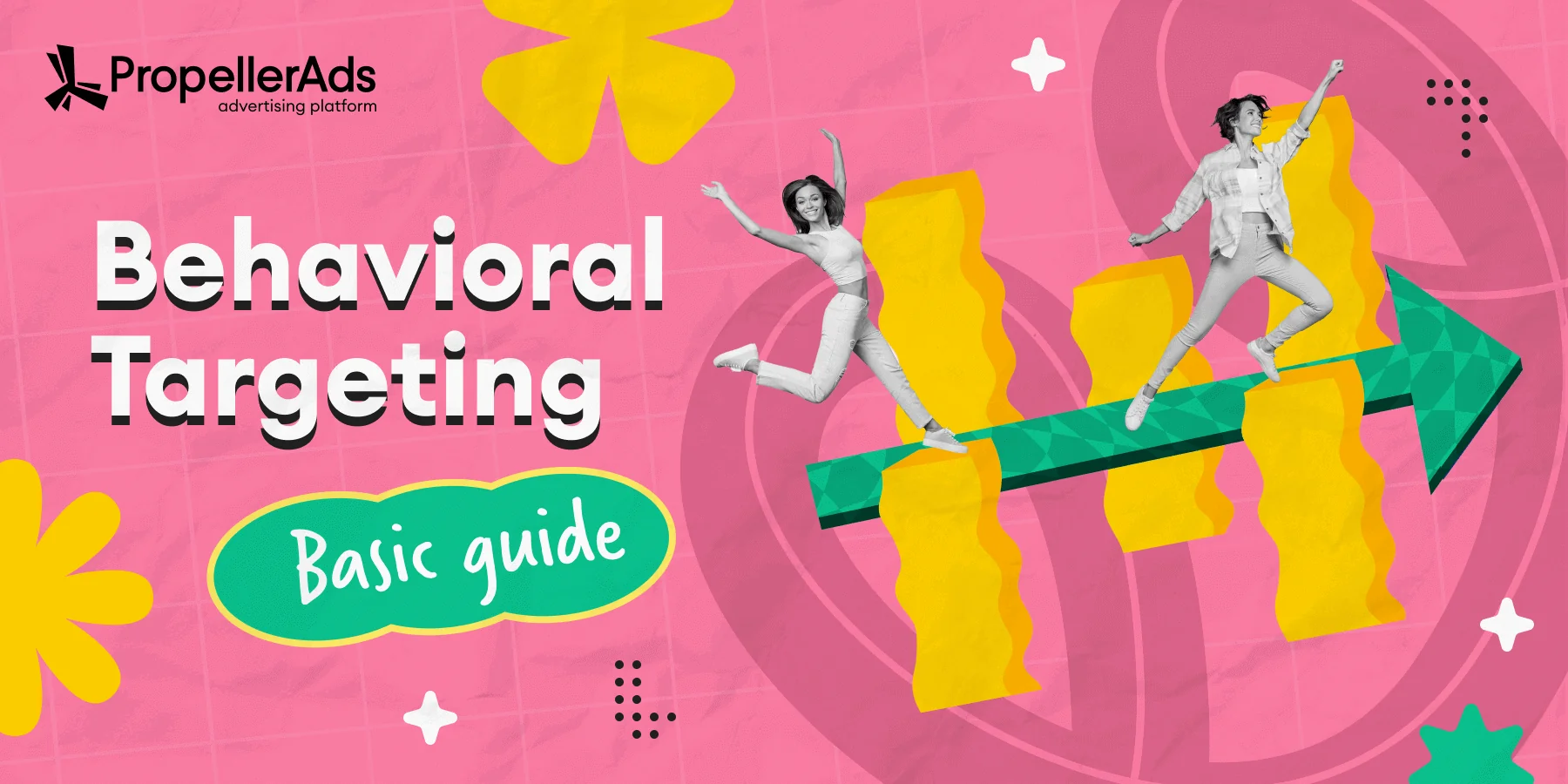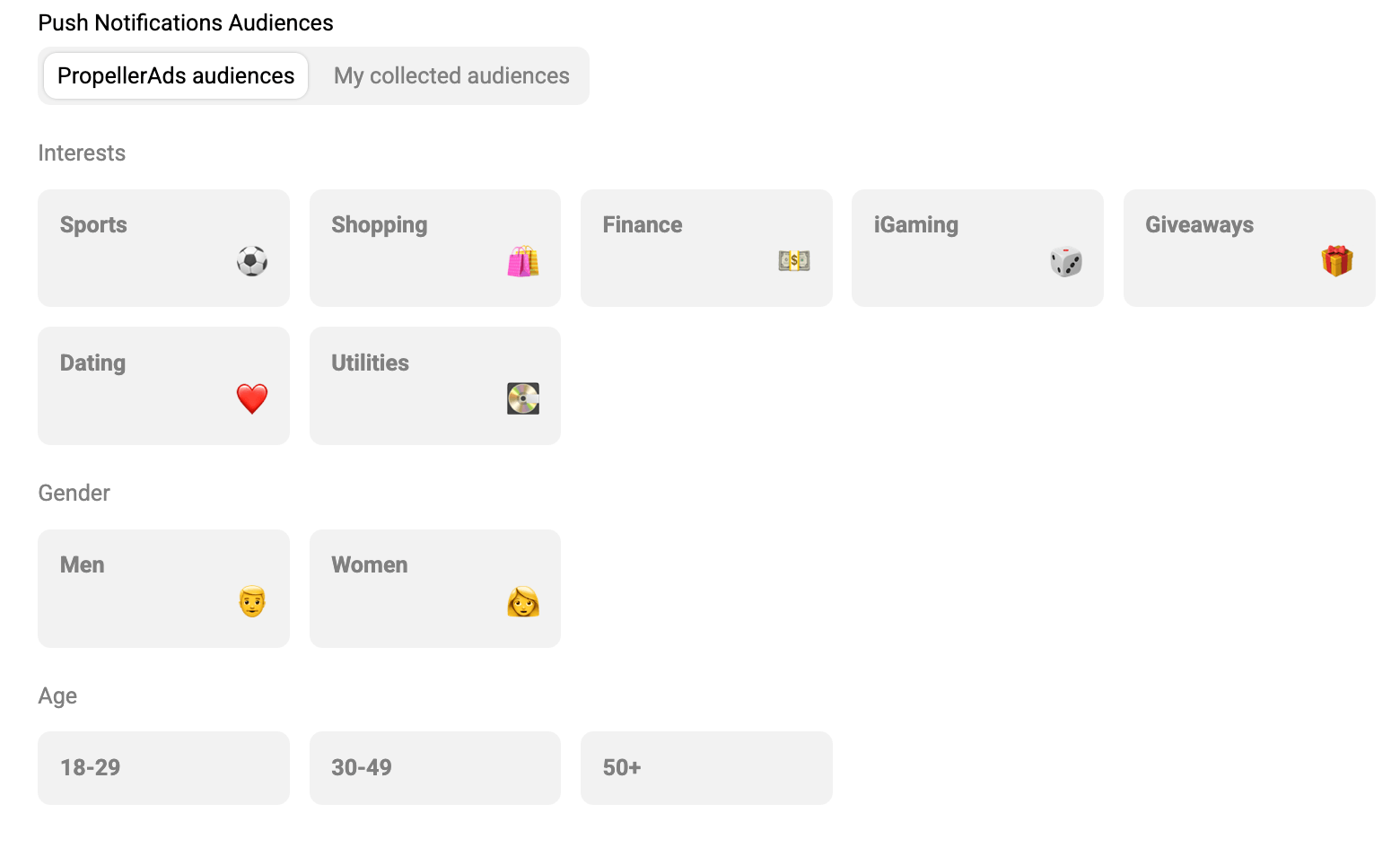Behavioral Targeting: What It Is, How It Works, and Why It Matters

When it comes to digital advertising, showing your ad to the right person at the right time can make or break your results. That’s where behavioral targeting comes in!
The right people at the right moment sounds like a perfect plan for your campaign, but how exactly does it work? Are there any drawbacks? How to succeed? These and other questions are answered below, plus – behavioral targeting examples included.
So, what is behavioral targeting?
Instead of guessing who might be interested in your offer, behavioral targeting uses real data, like search history, clicks, and site visits, to serve ads to people most likely to take action.
It’s been a go-to strategy for affiliate marketers and brands looking to boost conversions and cut wasted spend. But with cookies disappearing and privacy rules tightening, it’s also evolving fast.
In this guide, we’ll break down how behavioral targeting works, the pros and cons, and what it means for advertisers going forward. Also, we will address and compare contextual targeting vs behavioral targeting for better understanding.
And by the way, PropellerAds has an efficient targeting feature for those who want to target users precisely by their interests and demographics (for Push):

How behavioral targeting works
Behavioral targeting relies on real-time and historical data to show ads that align with a person’s interests, habits, or purchase intent. It’s less about where someone is online and more about who they are, or at least, what they’ve done recently.
Here’s how it works in three main steps:
- Data collection
Advertisers and platforms gather data about a user’s online activity. This can include:- Pages visited
- Searches performed
- Clicks on ads or products
- Time spent on site
- Device and location info
This data comes from multiple sources, including websites, mobile apps, CRMs, and third-party providers. It’s usually tracked via cookies, pixels, or device IDs.
- Segmentation
Once collected, this data is used to group users into audience segments based on behavior. For example:- People who searched for hiking boots in the last week
- Users who browsed product pages but didn’t buy
- Returning customers who engage with email campaigns
These segments are then stored in data management platforms (DMPs) or ad platforms.
- Targeting
Advertisers use this segmented data to serve tailored ads to specific groups. The next time a user visits a website or opens an app, they may see an ad that reflects their past behavior, like a reminder to complete a purchase or a promo for a related product.
Example: Someone visits an online skincare shop and looks at vitamin C serums without buying. Later, they see an ad for that same product (or a similar one) while reading a news site. That’s behavioral targeting in action; ads based on their earlier interest, not the content of the current page.
Types of behavioral targeting
Not all behavioral targeting works the same way. Depending on the setup, data source, and campaign goals, advertisers can use different methods to reach users based on their activity.
Here are the most common types:
- Retargeting (a.k.a. remarketing)
This is the most familiar form of behavioral targeting. It shows ads to users who previously interacted with your website or app, like browsing a product, adding to cart, or abandoning checkout.
Example of behavioral targeting: Someone visits your landing page but doesn’t convert. Later, they see a retargeted ad promoting a discount or reminder, nudging them to come back and complete the action.
- Network-based behavioral targeting
Instead of focusing on just one site, this method tracks users across multiple websites that are part of an ad network. It builds a broader profile of user interests (e.g., frequent readers of travel blogs, regular visitors to fashion sites) and targets ads accordingly.
This is the kind of large-scale behavioural targeting used by major ad platforms like Google, Meta, or programmatic DSPs. - Behavioral email targeting
Email campaigns can also use behavioral data to tailor content. For example:- Sending a reminder email after a cart is abandoned
- Triggering a follow-up when a user clicks a specific product
- Offering a discount to users who haven’t visited in a while
These are based on user actions, not just demographic lists, and they tend to convert better because they reflect what someone actually did.
Why is behavioral data important?
Behavioral data gives advertisers something most marketing strategies can’t: insight into real intent.
Instead of guessing based on demographics or assumptions, behavioral targeting uses concrete actions like clicks, searches, and visits to predict what someone wants next. That means more accurate targeting, better-performing campaigns, and less wasted spend.
Here’s why that’s important:
- More relevant ads
Behavioral data allows you to show ads that match where someone is in the buying journey, not just who they are. Whether they’re researching, comparing, or ready to buy, you can tailor your message to fit.
- Higher conversion rates
When people see ads that reflect their recent activity or interests, they’re more likely to click and convert. That’s why behavioral targeting often outperforms generic or demographic-based campaigns.
- Smarter segmentation
Behavioral targeting helps create more granular audience segments, like “window shoppers,” “repeat buyers,” or “category loyalists.” These segments can then be used to test different offers, creatives, or channels.
- Better retargeting strategies
Using behavioral data lets you set up personalized retargeting flows that move users toward conversion, for example, showing different messages based on how far someone made it in the funnel.
- Campaign optimization
Behavioral insights can also be used to improve creative, timing, and channel selection. You can learn and adapt your ads for better results based on data.
In short, behavioral targeting helps advertisers focus their budget on users most likely to act, and do it in a way that feels timely, not random.
Benefits of behavioral targeting and disadvantages
When done well, the best examples of behavioral targeting can dramatically improve the efficiency and impact of your campaigns. It allows you to reach users who are already showing interest, not just hoping they might care. However, behavioral targeting isn’t without its issues, especially in a world that’s becoming more privacy-conscious.
| Benefits | Disadvantages |
| Higher engagement Users are more likely to click ads tailored to their interests. | Privacy concerns Often relies on tracking tech that may violate regulations like GDPR. |
| Better conversion rates Targets users who’ve already shown intent. | Cookie dependence Many setups rely on third-party cookies, which are being phased out. |
| More efficient ad spend Focuses budget on users most likely to act. | Over-targeting risk Can lead to ad fatigue if users are shown the same ad repeatedly. |
| Improved personalization Uses real behavior to tailor ad creative and messaging. | Data quality issues Poor or outdated data can reduce targeting accuracy. |
| Smarter funnel strategies Map different behaviors to different campaign goals. |
Third-party cookies have powered behavioral targeting for years. But with growing privacy regulations and browser changes (like Chrome phasing out cookies in 2025), advertisers need to rethink their targeting strategies.
Platforms like Google are shifting toward new solutions, such as the Privacy Sandbox and Topics API, which aim to protect user data while still enabling ad targeting. But these tools are still evolving, and not everyone is on board. That’s where contextual targeting comes in as a privacy-safe alternative.
Contextual vs behavioral targeting
Let’s compare the two side by side:
| Feature | Behavioral targeting | Contextual targeting |
| Based on | User behavior (clicks, searches, visits) | Page content (topics, keywords) |
| Data used | Cookies, browsing history, third-party data | On-page content, metadata, headlines |
| Privacy compliance | Requires consent, less privacy-friendly | Fully GDPR/CCPA-compliant |
| Relevance | Based on user’s past actions | Based on what user is viewing now |
| Personalization depth | High (can tailor ads to user profile) | Moderate (based on context, not identity) |
| Setup complexity | Higher (requires tracking and data management) | Simpler (no need for user-level tracking) |
| Longevity | Uncertain (cookie deprecation, regulation risk) | Future-proof (no personal data needed) |
So, the conclusion is:
- Behavioral targeting is powerful, but its future is tied to how well advertisers adapt to a post-cookie world.
- Contextual targeting is privacy-safe, simpler to implement, and becoming more advanced with AI and NLP.
Final thoughts
Behavioral targeting has long been a favorite for advertisers who want to reach the right person with the right message at the right time.
By using real user data like clicks, visits, and search history, it enables highly personalized campaigns that drive clicks and conversions.
But as cookies disappear and privacy expectations rise, behavioral targeting is being pushed to evolve. New tools like Privacy Sandbox and first-party data integrations will help, but they also come with complexity and compliance challenges.
If you’re running performance-focused campaigns, the best approach might be a mix of both behavioral and contextual targeting. Use behavioral insights where privacy rules allow, and layer in contextual ads for reach, scale, and compliance.
If you’re using PropellerAds, you already have access to tools that support both behavioral and contextual strategies, so you can test, compare, and find what works best for your audience!
Join our Telegram for more insights and share your ideas with fellow-affiliates!




